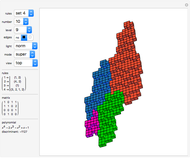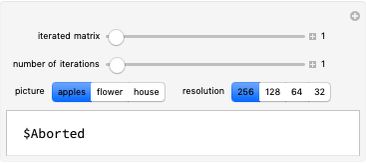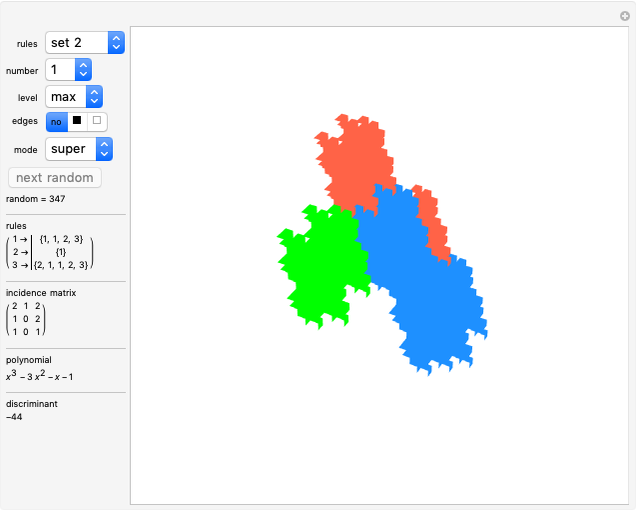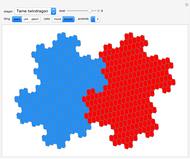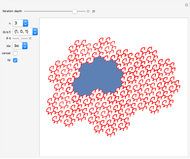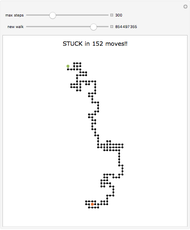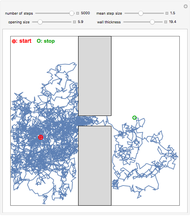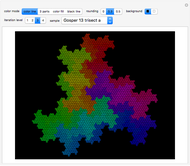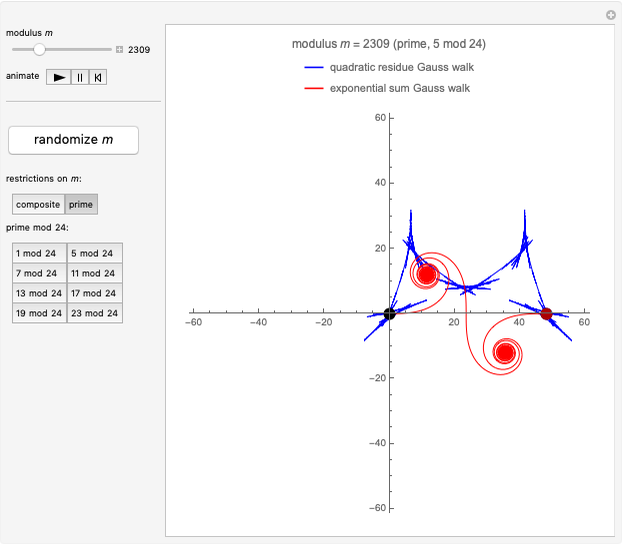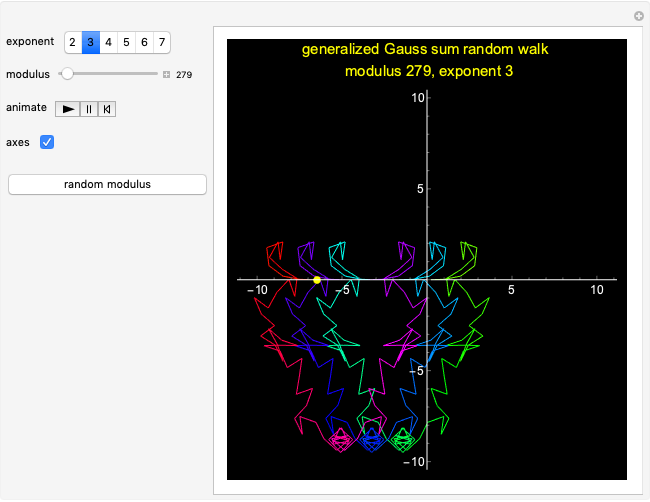Pseudorandom Walks with Generalized Gauss Sums

Requires a Wolfram Notebook System
Interact on desktop, mobile and cloud with the free Wolfram Player or other Wolfram Language products.
This Demonstration shows pseudorandom walks constructed from generalized Gauss sums, defined by  , where the modulus
, where the modulus  and the exponent
and the exponent  are integers of at least 2. (The case
are integers of at least 2. (The case  reduces to the classical quadratic Gauss sum.)
reduces to the classical quadratic Gauss sum.)
Contributed by: Ka Fung Tjin (June 2020)
(Based on an undergraduate research project at the Illinois Geometry Lab by Ka Fung Tjin, Erqian Wang and Yifan Zhang and directed by A. J. Hildebrand.)
Open content licensed under CC BY-NC-SA
Snapshots
Details
This Demonstration is inspired by visualizations from [1].
[1] R. R. Moore and A. J. van der Poorten, "On the Thermodynamics of Curves and Other Curlicues," Miniconference on Geometry and Physics (M. N. Barber and M. K. Murray, eds.), Canberra, Australia: The Australian National University, 1989 pp. 82–109. maths.anu.edu.au/files/CMAProcVol22-MoorePoorten.pdf.
Permanent Citation







